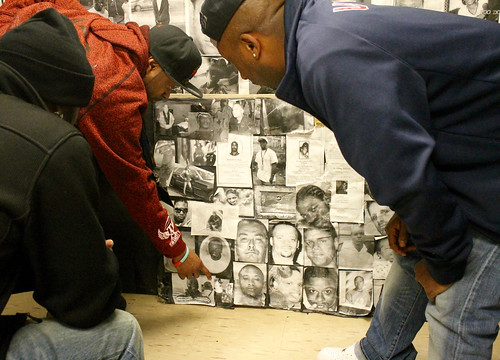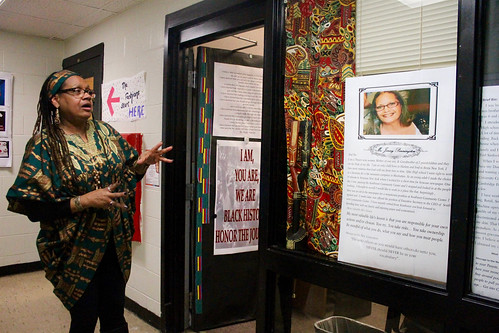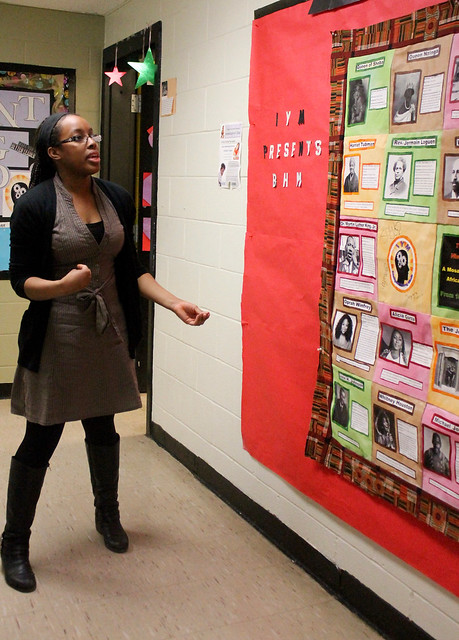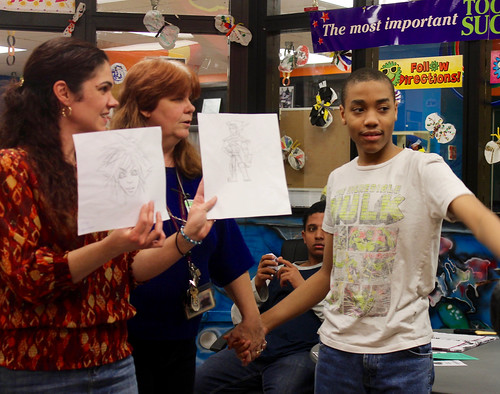Center spends Black History Month creating exhibits
Students at Southwest Community Center got a dose of black history when they prepared a museum for the public to showcase different facets of their history and culture.

On Feb. 25, the exhibits were opened to the public to walk through and judge, considering creativity, presentation, knowledge of the topic, organization and imagination. Each program at SWCC prepared a different exhibit relating to the program’s focus. For example, Mainstream, a program for people with developmental disabilities, created an activity for participants to match the famous black person with his or her disability. The matches included Harriet Tubman, who suffered from narcolepsy and seizures; Whoopi Goldberg, who has dyslexia; the rapper Foxy Brown, who suffers from hearing loss; and Stevie Wonder, who is blind.
“The whole purpose of this was to educate our kids to know more about black history,” said Valerie Hill, the director of community services at SWCC. “So they did the research and they have to tell us what they thought about it and how it applies to their life.”
On Friday, Feb. 26, the students involved in the black history museum will put on a performance to demonstrate all they’ve learned putting together their exhibits. The girls involved in PRIDE (promoting responsibility in drug education) collaborated to put together a fashion show for attendees at the black history museum. The PRIDE room at SWCC was decorated with pictures of famous black American fashion designers, like Tina Knowles, Steve Harvey, Jay-Z and Nicki Minaj. The girls, ages 5 to 10, modeled clothing that was donated to the center.
“We’ve come a long way from ripped pants and dirty T-shirts, and now we’re dressing the world,” said Monique Hill, who worked with the girls to create the fashion show. “We explained to them, fashion is really what you make of it; you can wear purple, orange and green, but if you put it together right, it’s awesome.”

Other exhibits included the Neighborhood Advisor Program, a program that aids senior citizens in living independently. Kathy Pearson interviewed and displayed responses from four Syracuse residents about their life experiences and advice to younger people.
“My intention was to give young people a little story about their elders,” Pearson said. “Unfortunately, young people kind of forget that these are the wisest people that we have and that we need to utilize their wisdom.” Their quips included advice about staying motivated and avoiding drugs.
Angela Scott created the exhibit for the Family 1st program and chose to focus on poetry. She decorated the door with the pictures and words of black female poets, like Nikki Giovanni, Maya Angelou and Stacey-Ann Chin. Scott also collected poetry by youth to distribute to the children at the center, because she thought they’d find those works more understandable.
The students involved in the Intelligent Young Minds program created a quilt of influential African Americans, like Martin Luther King, Jr. and Oprah Winfrey, and included information about their lives and legacies.
One of the more somber exhibits was that of the Saving Our Youth program. Ed Mitchell, designed a board filled with black and white pictures of Syracusans who had died as victims of gun violence or otherwise victims of homicide. Mitchell founded the Team Angel movement to persuade youth to stay away from violence and street life. Mitchell said he hoped the exhibit would have a positive impact on the young people who flow through SWCC.
“I created this because of my life, growing up and losing my friends and family to the violence or them going to jail,” Mitchell said. “So I try to teach kids positivity and be a support system to them.”


— Article and photos by Ashley McBride, The Stand Staff reporter
 The Stand
The Stand

